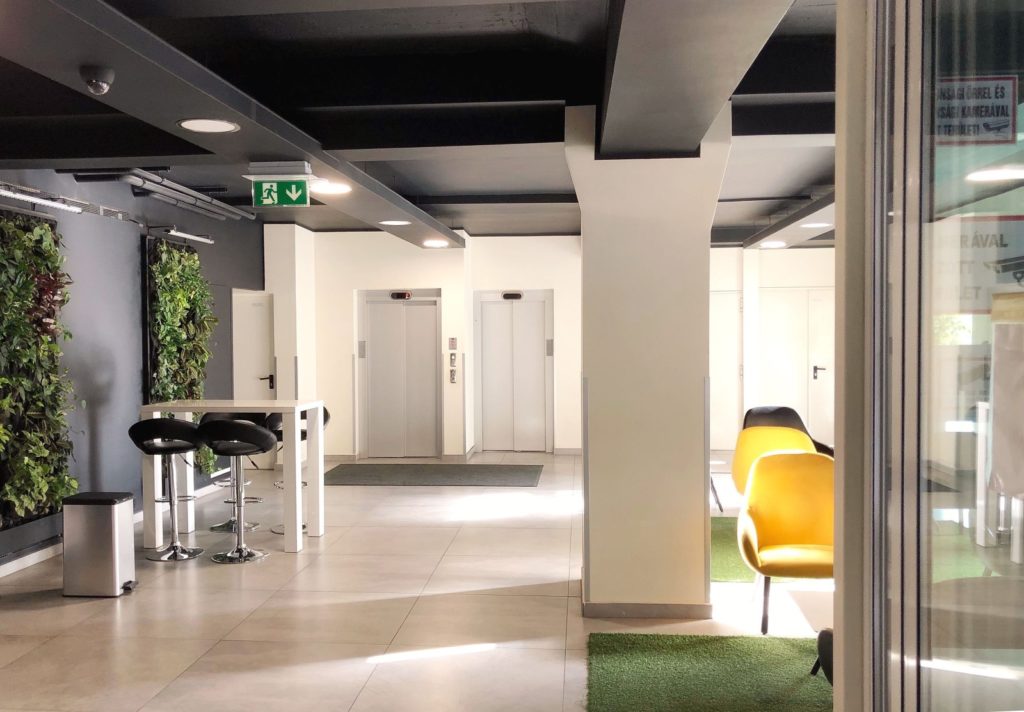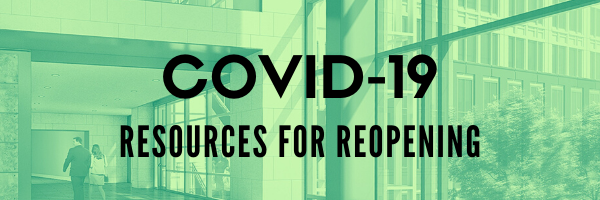
May 14, 2020 – The safe and sustained reopening of buildings has emerged as a key priority among developers, landlords, employees and medical professionals, and NAIOP Maryland continues to monitor the release of information detailing best practices both locally and nationally. New data and guidance are disseminated on a daily basis, including the following summary gleaned from a recent webinar, and additional resources from various sources. NAIOP Maryland continues to report on the findings and opinions from various stakeholders.
A webinar sponsored by workspace security company Openpath, examined the systems and protocols needed for implementation before the widespread reopening of buildings could occur, including who will pay for the added expense. Key takeaways included:
– the key is making people feel safe,
– each property will require its own game plan,
– the 7 am to 7:30 pm “baby boomer” work model is now out the window,
– security guards will assume increasing importance and
– 60% of all people believe tenants and landlords should share the expense for needed retrofits.
The session featured a panel of national commercial real estate experts who explained the country is now entering Phase II (of IV) of the reopening process defined as “pre-vaccine.” This phase features “waves of shifting behavior, ever-changing public policy and confused emotional sentiment” that clouds the decision-making process of companies and individuals. Phase III is “post-vaccine” as social distancing and shelter in place policies maintain grips on society and Phase IV is “the new normal” as the world readies for the next COVID outbreak.
“Many C-suite executives have been mobile for years, so this new telework model is not a severe shock to the system but, for those employees that travel to work every day, the key is removing fear and anxiety and doing what is necessary to make them feel safe,” explained Chris Rising, CEO of Rising Realty. “The federal government has provided return to workplace guidelines but not rules. In one year, the procedures put in place now will be exceedingly different as the thinking of today becomes battle-tested. The baby boomer mentality of working from 7 am to 7:30 pm will be out the window as the line between home and work becomes increasingly blurred.”
“We forecast a slow re-occupancy program in 25% increments beginning in late May, as there is no real rush to return to the workplace and no one want to be the first to do so,” stated Rob Kane, Executive Vice President of Lincoln Property Company. “There are no upsides to being first and tremendous downsides for going back too early. It will be incumbent on every landlord to prepare a specific game plan for each building to address different sets of circumstances. This includes mapping out a path of travel, including in the lobby and common area spaces and adding graphics and way-finding signs throughout hallways. Everything has a common goal to make employees feel more comfortable.”
“We believe security personnel will play a significant role going forward,” added Paul Brindley, Senior Managing Director of JLL. “At first, you may see this group opening up doors for everyone to eliminate a touch point. But they are too valuable to continue in this manner, and we envision an expanded role to provide safety information and help people in general.”
The panel listed several capital investments and protocols needed prior to a re-opening including mobile “touch-less” access systems, congestion-free lobbies, occupancy monitoring, elevator capacity management, cleaning stations, mobile app visitor management and tenant communication apps.
Industry best practices that the group expects to see implemented include social distancing protocols, on-site temperature checks, sanitization stations and the use of disinfection at common and high-traffic areas.
Who is going to pay for all the needed retrofits and additional personnel on-site? The results of the live poll indicated that 60% believe the costs should be shared equally between the tenants and the landlords. Approximately 28% of the respondents indicated that the expenses should be solely borne by the landlords. The remaining percentages were the government (8%), tenants (3%) and financial institutions (2%).

A number of government agencies and business groups have published information containing best practices and strategies for reopening workplaces including:
SAFE WORKPLACE: Best Practices and Baselines for Reopening Maryland
Maryland Chamber of Commerce
Making Maryland Stronger
Maryland Manufacturing Network
Embracing a New Reality: Workplace strategy insights for COVID-19 and beyond
Herman Miller
For more COVID-19 resources, visit NAIOP’s COVID-19 resources page.